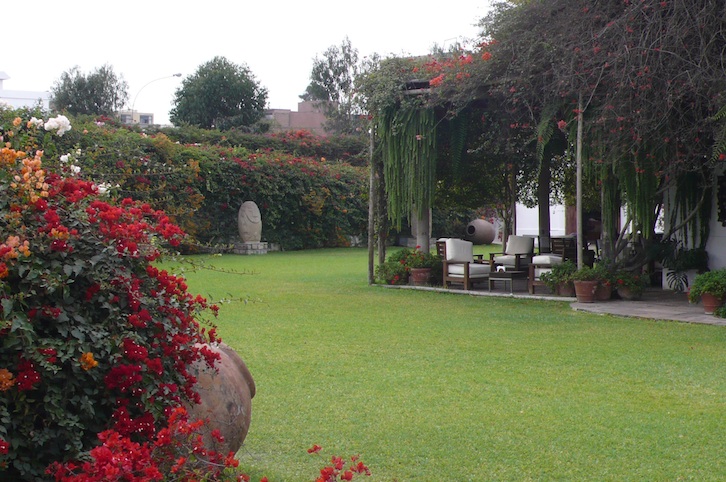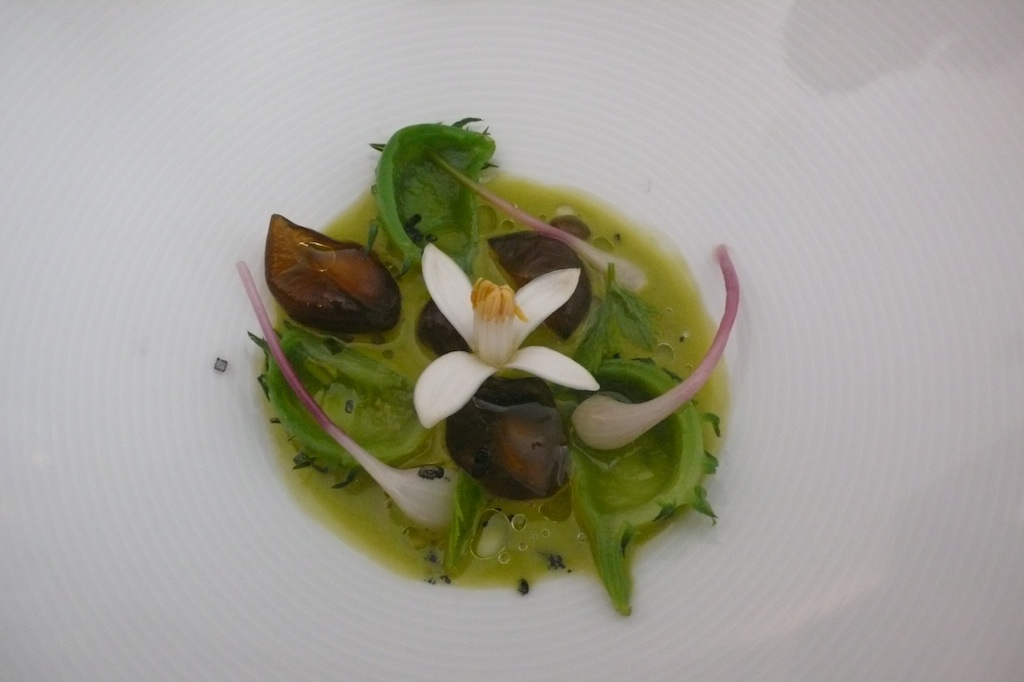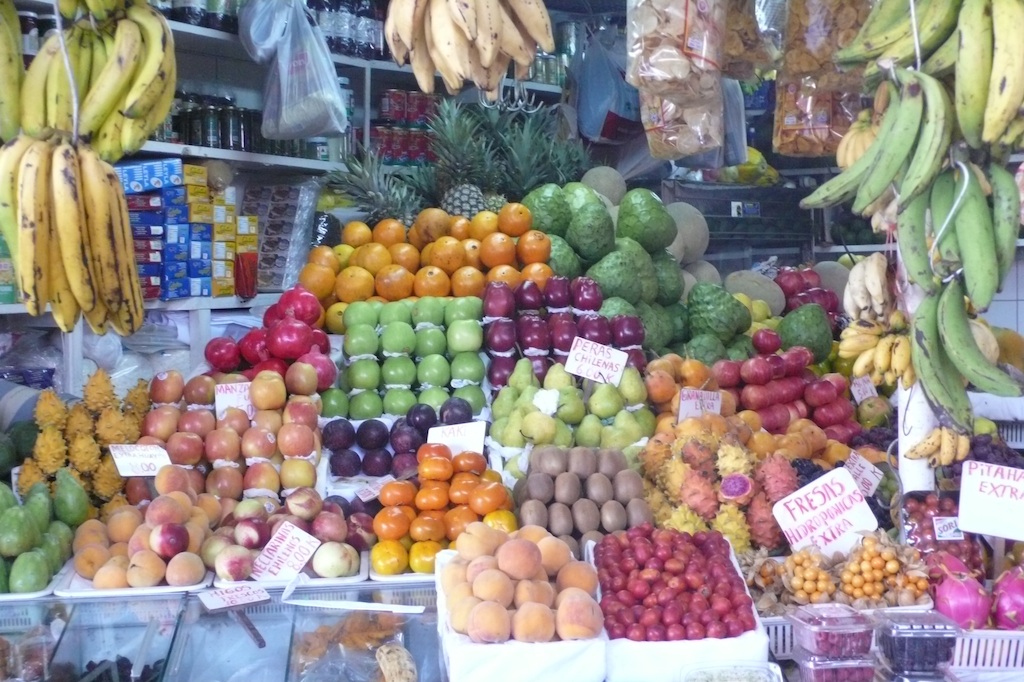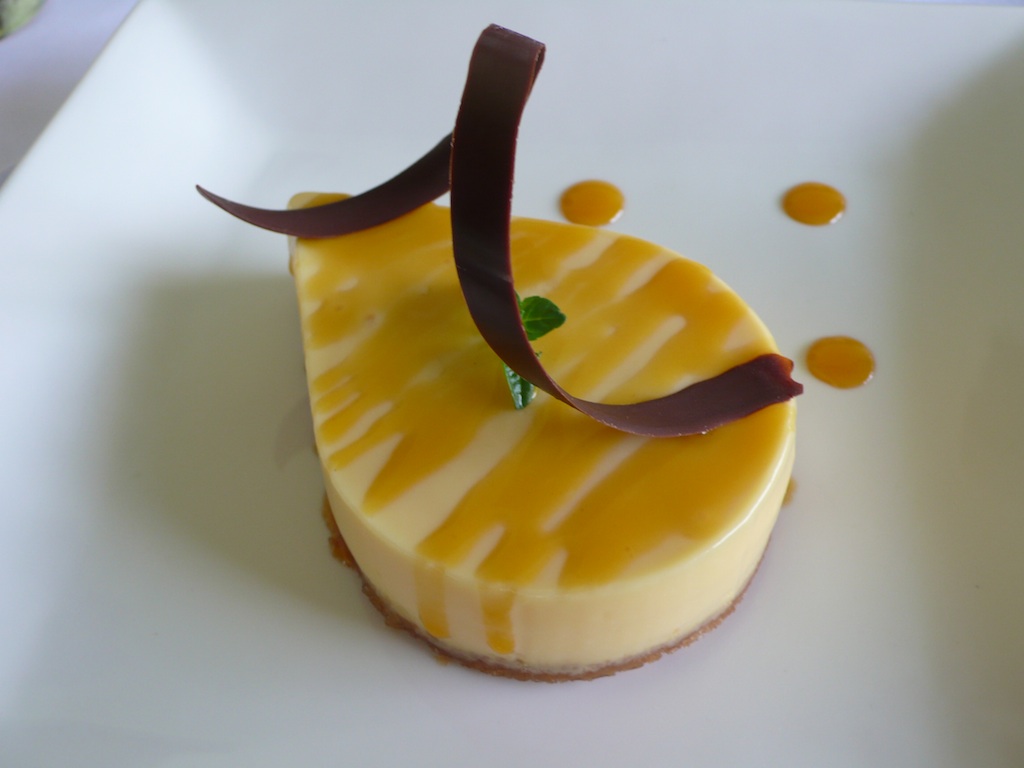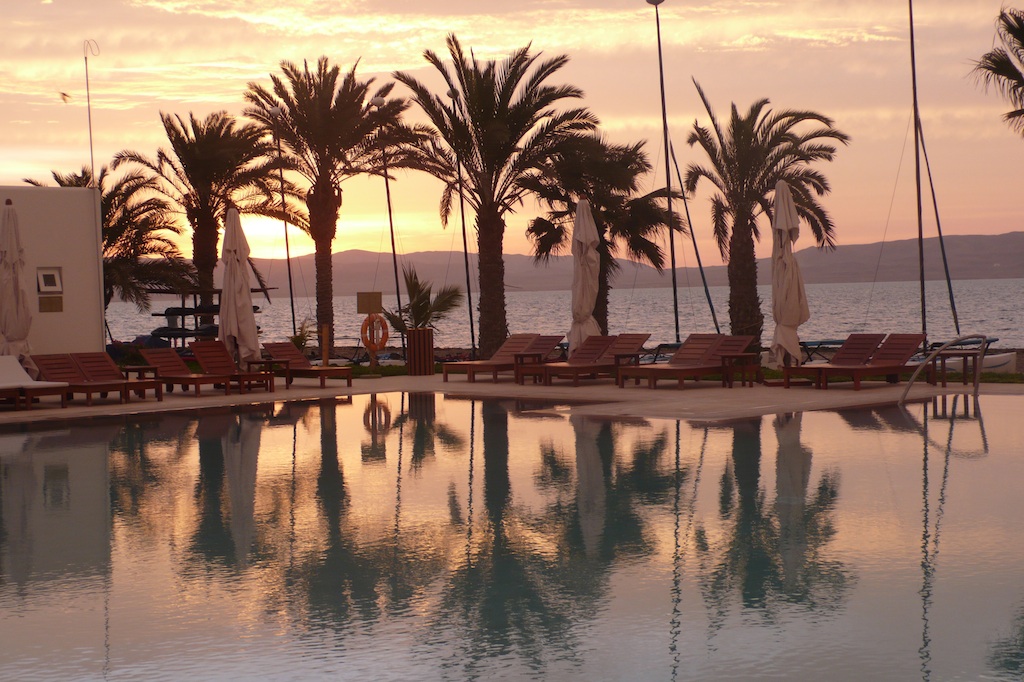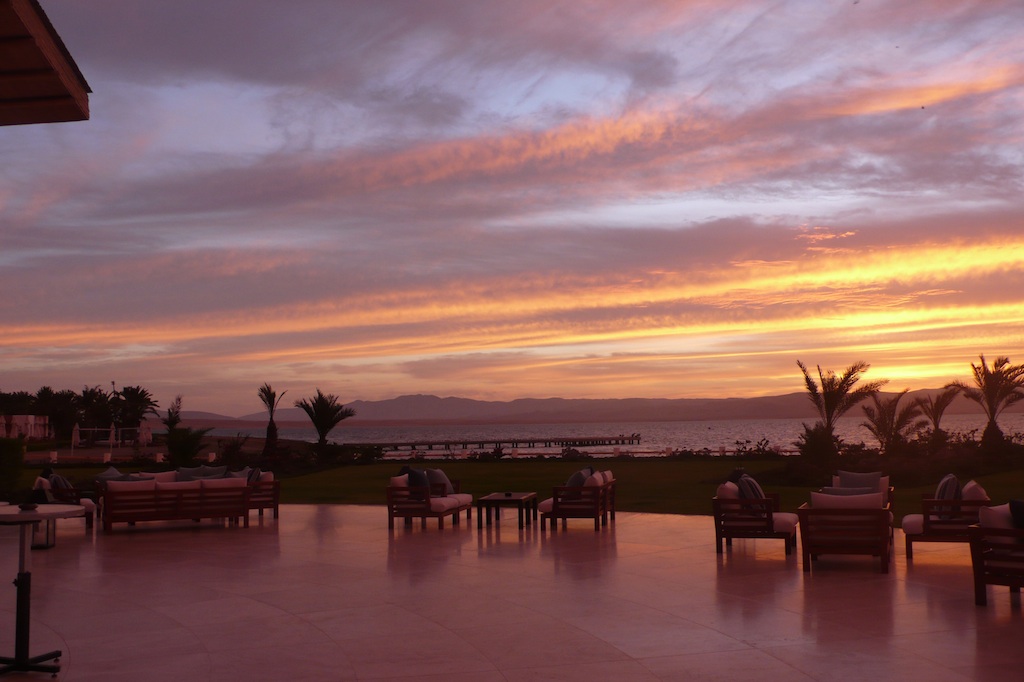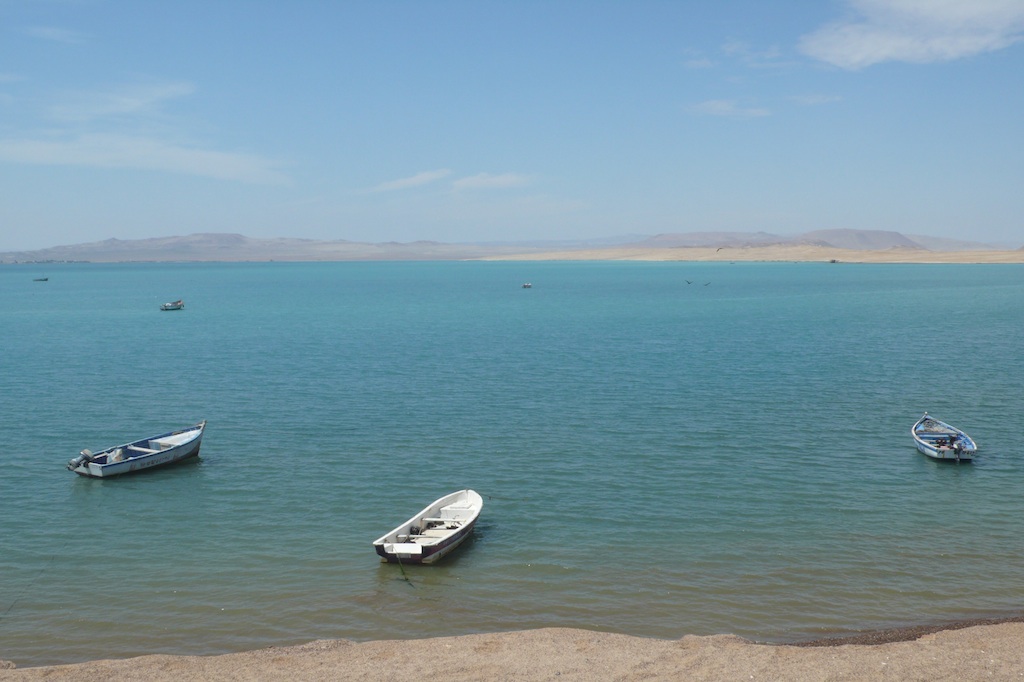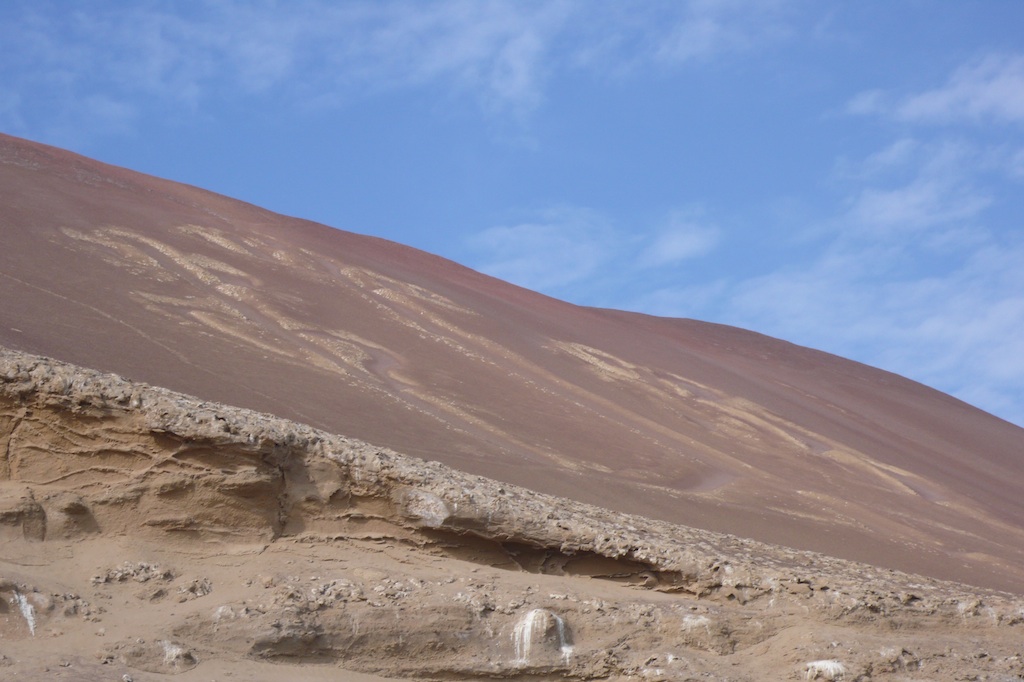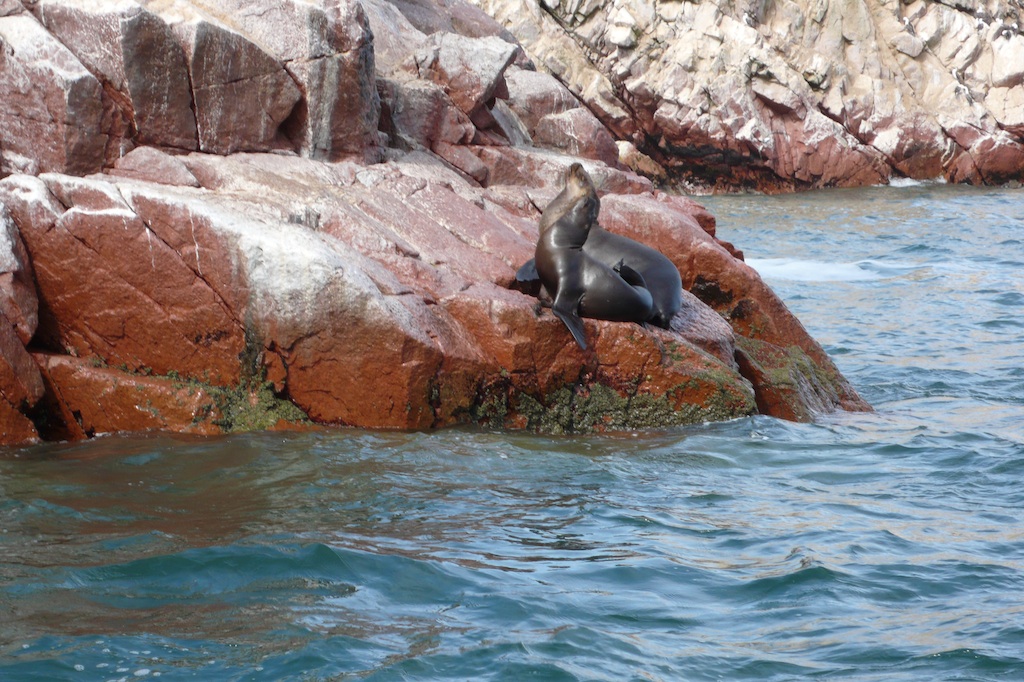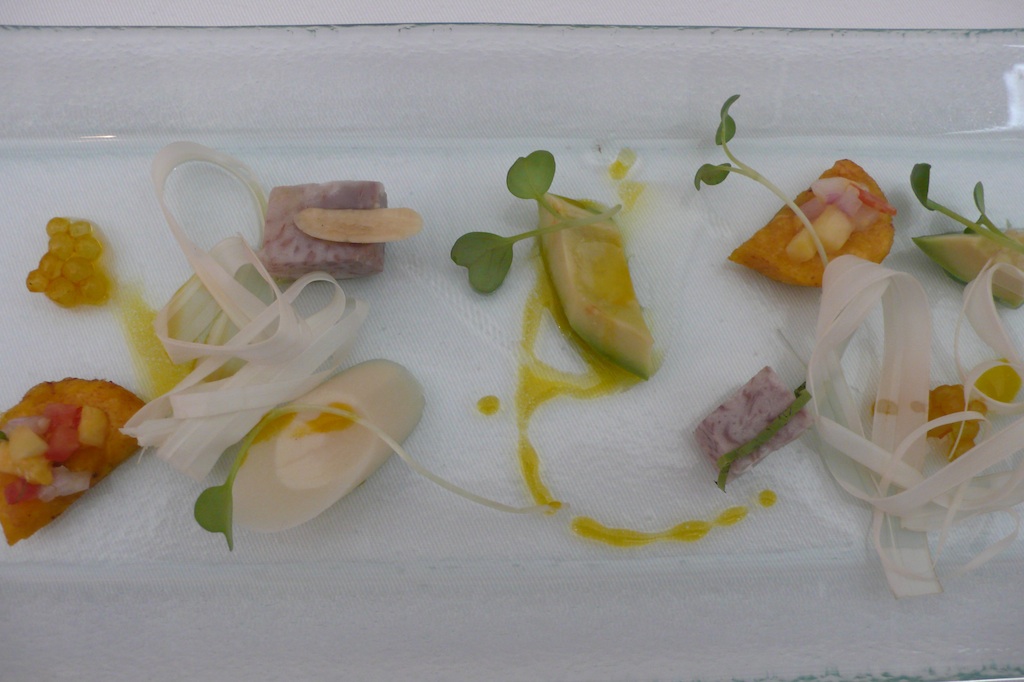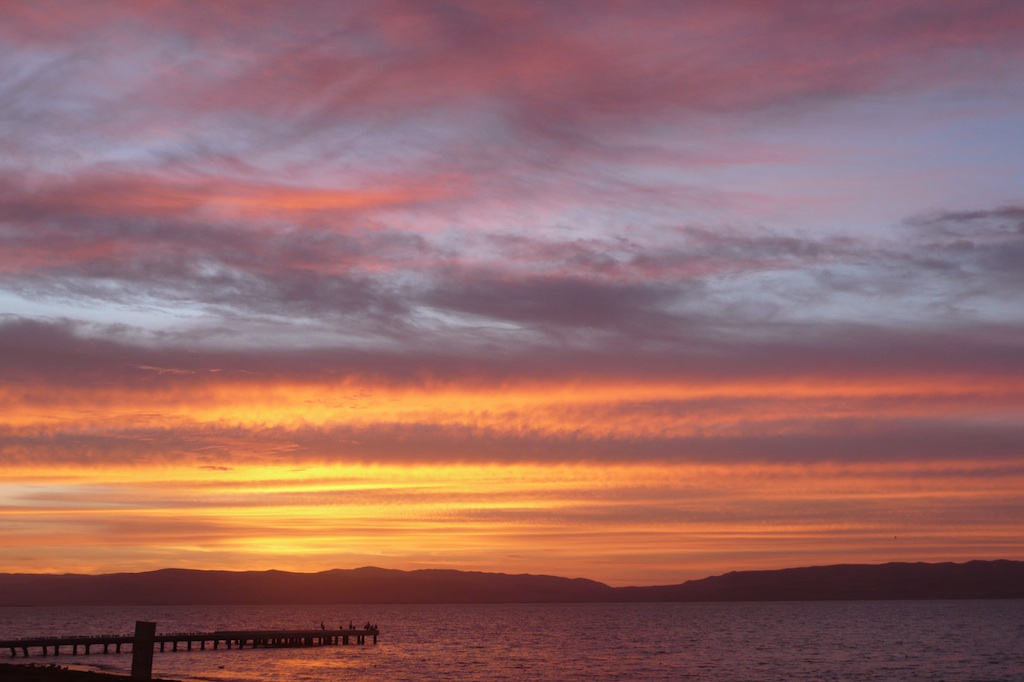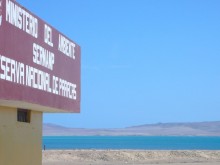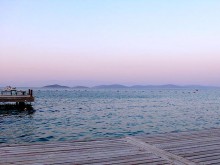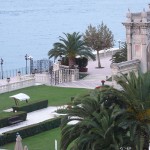“More dry than the Sahara,” that’s what our Lima Tours guide kept repeating to us as we followed her intrepid lead as she happily urged us higher and higher up the Huaca Pucllana. A pre-Incan pyramid of adobe bricks, Huaca Pucllana is located smack in the middle of Miraflores, one of Lima’s more upscale residential neighborhoods. Imagine a pre-Columbian pyramid on Manhattan’s Upper East Side and you’ll have a similar sensation of coexisting between the modern and the ancient world.
For too long, visitors to Peru have landed in Lima, the country’s capital and largest city – and headed directly to Cuzco or Machu Picchu. And while there is no denying the allure of these Incan repositories, more and more travelers are discovering the charms and wonders of the city founded in 1535 by Spanish conquistador Pizarro who christened it “City of Kings.” A more apt moniker today might be “City of Cuisine” – because the world’s gourmands are flocking to the city that is often referred to as the “Gastronomical Capital of the Americas.”
As the second largest desert city on the planet (after Cairo, Egypt), Lima has a subtropical climate but is mild and comfortable, thanks to its proximity to the ocean. This sprawling, polyglot city located on a desert coast overlooking the Pacific Ocean is the fifth largest city in Latin America (after Mexico City, São Paulo, Buenos Aires and Rio de Janeiro) and home to one in three Peruvians. And just as those other four Latin American metropolises have widened their embrace of LGBT people, so is Lima becoming an LGBT destination.
Nearly ten million people live in this city whose history has been shaped by a series of powerful earthquakes that razed the city in 1687, 1746, and as recently as 1940. For years, upheaval had become second nature to Limeños – and Peruvians, in general – thanks to earthquakes and Maoist insurgent organizations, but finally it appears that fiscal and political stability has arrived – along with an influx of international tourism.
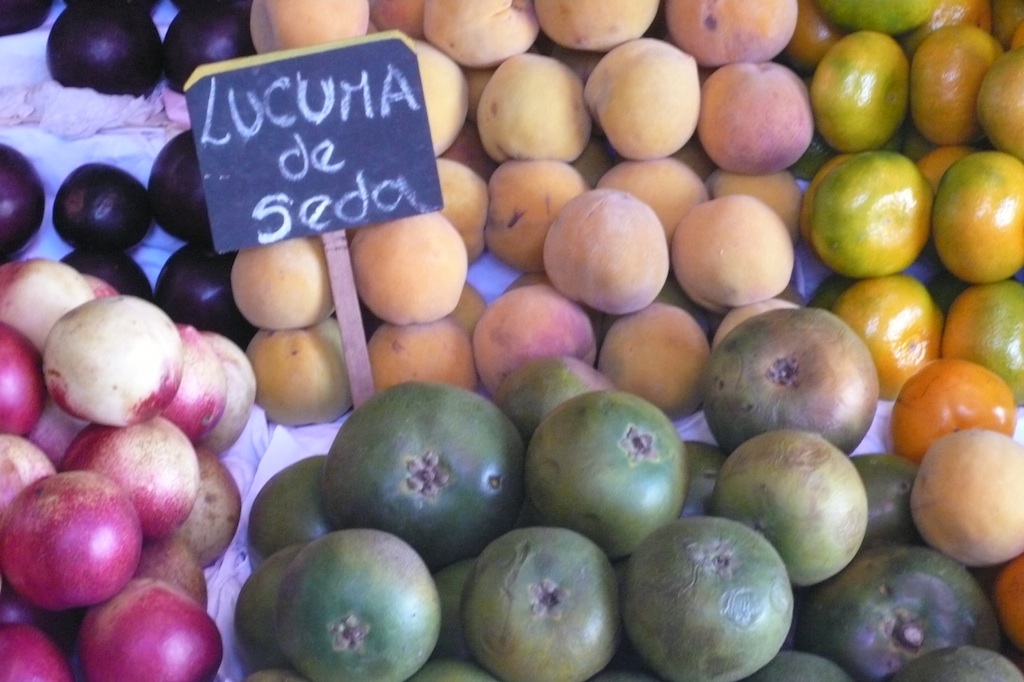
Lucuma, a fruit with the taste and consistency of butterscotch, is often used in Peruvian desserts. (Source: MRNY)
As a country, Peru has more than 10,000 years of history – and over 5,000 archeological sites. Apart from Cuzco and Machu Picchu, there’s also the Nazca Lines, vestiges of a culture that existed more than 300 years before Christianity, which were discovered in 1927 – and have since confounded and intrigued archeologists, sociologists, and anthropologists, none of whom have been able to definitively determine the reason for the Nazca markings’ existence.
One of the ten most biologically diverse countries in the world, Peru is divided between the coast, the highlands, and the jungle, and holds the world’s record for the most species of fish, butterflies, and orchids (over 3,500 varieties). There are nearly 1,800 glaciers and fifty mountains that tower 20,000 feet or more – and more than 2,000 miles of Pacific coastline.
All quite fascinating, right, but what’s it like for LGBT people? In keeping with the Catholic Church’s heavy-handed (and oppressive) attitude toward LGBT people, Peruvian LGBT life is still heavily (and adversely) influenced by the church, as well as a machismo culture – and yet, conversely, same-sex sexual activity has been legal in Peru since 1924, and, since 2009, gays have been allowed to serve openly in the military (something that still can’t be said about the States).
What this means for most LGBT Limeños is an abundance of house parties, usually in the more tony neighborhoods of San Isidro and Miraflores, often followed by drinks (and sometimes dancing) at a series of bars and nightclubs most often located in Miraflores. One night, we found ourselves at Carlos Bruce’s bar/lounge cum nightclub, Picas, where a stunning array of Limeños spilled out onto the open-air patio, while a bongo drummer kept beats to a European house soundtrack played by a Peruvian deejay. Owner Bruce was in the midst of the national elections, where he was a candidate for vice president, and yet nonetheless, he sat with us, regaling us with tales of his confrontations with Lima’s Catholic archbishop who opposed Bruce’s stance on same-sex marriage.
The amalgam of music, politics, fashion, and sex that night was representative of Lima’s nightlife (and in keeping with LGBT social life all around the developed world) – and yet what makes Lima more fascinating than many other cities of its size is a surfeit of exemplary (and reasonably-priced) restaurants on the cutting edge of culinary innovation.
Eat your way through Lima might be the catchphrase we’d use to best highlight this city’s gustatory pleasures. From typical Creole cuisine to fusion and nouvelle Andean, Lima’s culinary style encompasses the multiple waves of immigration (and conquistador) in its history, commingled with Peru’s bountiful, indigenous produce. The result is a smorgasbord of restaurants and chefs, judiciously and creatively applying European and Asian influences to develop what might be called Nuevo Peruvian. Every Limeño, for example, has a personal favorite Chifa, the ubiquitous restaurants that serve an amalgam of Chinese-Peruvian food. And the abundance of trattorias in Miraflores is a testament to the history of Italian immigration to Lima.
Where better, then, to find the true heart and soul of Lima than in the kitchen? Most people the world over are familiar with Peru’s national drink, pisco, the potent elixir derived from the distillation of fresh, fermented grape juice – and ceviche is so much a part of Peruvian heritage that there’s a holiday in its honor. Yet newcomers to Peru are likely to find themselves smitten by the profusion of delicious, indigenous produce, such as lucuma (a fruit with the taste and consistency of butterscotch, often used in desserts), cherimoya, the exotic granadilla (passion fruit), which Peruvians suck clean for its gelatinous sweetness, and the cactus fruit (or prickly pear), which Peruvians call tuna and is similar to a watermelon crossed with a banana, with the tint of a pomegranate.
Wherever we sat in Lima, from a juicerie in Miraflores to a restaurant in San Isidro or a private home in Miraflores, what happened at the table was an outpouring of generosity and hospitality – and what became increasingly evident about Lima, Peru was how much its citizenry welcomes those who make the effort to experience its manifold treasures.
In the 16th century, when the Europeans discovered the richness of Peru, they coined the phrase, “It’s worth a Peru” as a means of expressing the breadth of riches they encountered – and it’s fitting that the same phrase, “It’s worth a Peru” serves to exemplify all the treasures that await the traveler who heads to Lima.
GETTING THERE:
A recent edition of the “LAN Airlines Diversity Newsletter” made mention of a number of LGBT accolades that the Chilean airlines had received, including a nomination by EDGE Media Network for “Favorite International Airlines”, as well as a nod from Logo’s “TripOut Gay Travel Awards.” The newsletter also pointed out that LAN was the first Latin American airline to develop an LGBT advertising campaign and cited the airline’s sponsorship of the International Gay and Lesbian Travel Association (IGLTA). As well, LAN Airlines was the official sponsor of San Francisco Pride in 2010. Get that!
Founded in 1929, LAN Airlines is Latin America’s leading international carrier – and given the increasing appeal of South America to the LGBT market, LAN is the perfect airline for that trip to IGLTA’s 2012 convention in Florianópolis, as well as the World Cup 2014 in Brazil and the 2016 Summer Olympics in Rio. And now that LGBT people can marry in Argentina, what better way to fly there than on LAN Airlines?
With five gateways in the United States and Canada, LAN flies to 50 destinations, including Buenos Aires, perhaps the “crown jewel” of LGBT destinations in Latin America, as well as Santiago, with its increasingly visible LGBT population, and Lima, Peru, home to an evolving and welcoming LGBT culture.
All of which is to say, LAN Airlines loves the gays – and if there was any doubt, LAN Airlines serves Louis Roederer Champagne in its Premium Business class. What’s keeping you? Book that flight now!
Flying Premium Business on LAN means seats that recline completely, forming a bed 23 inches by 73 inches, on top of which is placed a snow-white duvet, along with a plush, full-size pillow, thereby insuring a restful sleep – without a single Ambien. Before sleep, however, there are a plethora of entertainment options and a three-course meal, served on white linens, with proper cutlery – and, what with the attentive service by a staff with the kind of grace and elegance that one associates with dancers from the American Ballet Theatre, it’s entirely possible that sleep might be the last thing on your mind.
The point is, LAN Airlines knows and understands how we live and how we play – and they love to celebrate the good life with us.
LINKS: LAN Airlines LAN Diversity
WHERE TO STAY IN LIMA:
Sonesta Hotel El Olivar: More a resort than merely a hotel, the Sonesta Hotel El Olivar Lima is located in San Isidro, Lima’s tony residential neighborhood that has an atmosphere similar to Pasadena in the Thirties: very exclusive and private, with homes framed by hedgerows that are manicured by a fleet of uniformed gardeners who appear at every corner. The seven-story hotel’s 134 guest rooms (many of which overlook Olive Grove Park) are capacious (and particularly when compared with European hotels) and furnished in soothing earth tones. The marble bathrooms are nearly decadent, large and luxurious, and the rooftop outdoor pool on the seventh floor is akin to a private spa.
Breakfast, served at El Olivar Restaurant & Bar, is not to be missed. The atmosphere is relaxed and yet semi-formal, with the most beautiful heavily starched napkins – and nearly every attendant dressed in a suit. Water is poured from heavy silver pitchers and the coffee is tunki, grown by a Peruvian farmer in the Puno region in southeast Peru – and often considered the world’s best. As for the buffet, there’s a splendid array of some of Peru’s most delicious fruits, including prickly pear (which Peruvians call “tuna”) and papaya, as well as freshly-squeezed pawpaw juice (papaya and lime), and a grain called kiwicha (amaranth) that is as good on fruit as it is good for your immune system.
There’s something very alluring about taking breakfast in this soothing room – which perfectly parallels how one feels about staying at the Sonesta Hotel El Olivar Lima: relaxed and indulged.
LINK: Sonesta Hotel El Olivar
Casa Andina: Rising on the site of Lima’s first five-star hotel, the Miraflores César, the Casa Andina Private Collection has a legacy to uphold – and the sleek, 17-story hotel does a beautiful job of commingling the beloved hotel’s storied history (guests included Sinatra, Iglesias, Polanski, and the like) with a fresh new look. The fabled piano remains in the lobby, with the original pianist, while colonial-era antiques complement contemporary artworks.
The painstaking and loving renovation in 2008 kept the 174 rooms as ample as they were originally, with wood beams and arched doorways. A superior room was the equivalent of a three-room apartment, complete with floor-to-ceiling windows that looked out onto Lima’s rapidly-changing urbanscape. At night, the city glowed – and it was tempting to remain inside, with room service and a local.
Situated in Lima’s most trendy neighborhood, Miraflores, the Casa Andina makes a perfect base camp for forays to Lima’s LGBT bars and clubs. There’s also a third-floor indoor pool, with waterfall and outdoor terrace, in the event that you, or your local boy, wish to swim off some of your nocturnal indulgences. Breakfast is served in the hotel restaurant, Alma Cocina Viva – and this sumptuous buffet is a smorgasbord of Peruvian specialties, including crêpes, an omelette station, and a profusion of Peruvian fruit and hot dishes.
As for the service, the staff at Casa Andina is unfailingly polite – and comprised of precisely the kind of people who give Peruvians a good name and make you yearn to return as soon as possible.
LINK: Casa Andina Private Collection
WHERE TO STAY IN PARACAS:
Hotel Paracas, Luxury Collection Resort: A three-hour drive south of Lima, Paracas is a weekend resort for many upper-class Limeños who keep beach homes here – and yet, Paracas is also a fishing village evocative of the south of France in the years before tourism overtook local industry. With one of the richest ecosystems in the world, the desert peninsula of Paracas includes Paracas National Reserve, which is two-thirds water. The turquoise waters of Paracas Bay are endlessly captivating – and particularly when one is situated at the Hotel Paracas, Luxury Collection Resort.
First built in 1944, the original hotel was something of a well-loved, dowager, frequented by successive generations of Lima’s well-heeled families – but the 2007 earthquake devastated the property. Since then, Hotel Paracas has been completely rebuilt, according to the standards of the SPG Luxury Collection – and the results are stunning. With two swimming pools (both enormous) overlooking the bay, the property is a pristine resort, with immaculate grounds (attended to by a fleet of gardeners) and open-air bars and lounges and dining areas. The sense of calm is so pervasive that a visit to the spa almost seems redundant – and yet the stand-alone Hotel Paracas spa is a whole other reason to remain in residence for an additional weekend.
The commodious accommodations include chalets, bungalows, and villas, all of which are immaculate and modern, furnished with an assortment of contemporary pieces that evoke a private home in the Hamptons. Amenities include private waterfront terraces, iPod ports, and 37″ LCD televisions – as well as the requisite rainfall shower. Complimentary shoeshine and decadent chocolates are the sort of details that keep one smiling.
Overall, the atmosphere at the Hotel Paracas is not unlike living in some luxury seaside compound, where it’s impossible to believe that anything is awry with the world. You want the world to be this beautiful always; you want to linger at the water and marvel at the magnificent sunsets. In short, you want to move here and never leave.
LINK: Hotel Paracas, Luxury Collection Resort
WHERE TO STAY IN THE SACRED VALLEY:
Sol & Luna: If you find yourself in the Sacred Valley, then it’s highly recommended that you stop in for a meal, at least – if not for a night or two or three – at Sol & Luna, the splendid luxury lodge owned by the ever-charismatic and charming Marie-Helene (aka Petit Pois) Miribel. Trust us; this is the sort of establishment that will make you consider an extended sabbatical in Peru. It happened to Petit Pois; ask her and she’ll tell you about how a young Frenchwoman became a dedicated Peruvian.
LINK: Hotel Sol y Luna
WHAT TO DO IN LIMA:
Lima Tours: Perhaps the best thing you could do if you’re visiting Lima for the first time (or even the second, third, or fourth) is hook up with Lima Tours. Founded in 1956, Lima Tours has been welcoming LGBT travelers for over thirty years, commencing with travel guru, Hanns Ebersten, who put together, with Eduardo Arrarte (Lima Tours founder), one of the first “men only” tours to the Land of the Incas in 1970s.
Winner of IGLTA’s “Hall of Fame Award” in 2008, Lima Tours also served on the host committee for the IGLTA symposia in 2002 in Lima – and again in 2008 in Cusco and Machu Picchu. Their current client list includes Alyson Adventures, Zoom Vacations, Concierge Travel, White Glove Cruises, Hanns Ebersten, among others – all of which should make it abundantly clear that Lima Tours knows and loves the LGBT market.
As wonderful as their embrace of LGBT people, Lima Tours is staffed with a group of knowledgeable and professional employees who go above and beyond their jobs to insure that every traveler in their flock is happy and well-cared for. These are the sorts of people who will arrange private tours to private homes, plan special menus, insure that every porter is tipped, attend to all transport details, and will also, if need be, search high and low for a lost ATM card. And moreover, Lima Tours is an altruistic bunch, having founded the Lima Tours Foundations, whose mission is to promote access to culture, education, and equal opportunity to all Peruvians.
These people are an invaluable resource – and the key to understanding and appreciating Lima and its many glories.
LINK: Lima Tours
Museum Huaca Pucllana: Right in the middle of Miraflores stands a massive pre-Incan pyramid of adobe bricks. Once used as a ceremonial center for ritual games (including, yes, human sacrifices…), the Huaca Pucllana was the center of Lima culture from 200 A.D. – 700 A.D. Open to the public since 1981, it’s possible to walk to the top of the platforms – and look out over the city of Lima that has risen around this fifth-century structure. Once you’re back on terra firma, head to the Restaurant Huaca Pucllana at the pyramid’s base. Back in the heyday of pre-Incan culture, the diet consisted of lucuma and shark meat – but the serene and secluded restaurant (with a covered terrace) serves Nuevo Peruvian cuisine that is as thrilling as the views of the pyramid, which is illuminated at night.
LINK: Huaca Pucllana
Larco Museum: This private museum, surrounded by beautiful gardens, is located in an 18th-century vice-royal colonial mansion (that was built over a pre-Columbian pyramid from the seventh century). The storage area alone has more than 45,000 archeological objects, while the museum possesses an extraordinary collection of Andean artifacts, with particular emphasis on gold and jewelry. The museum’s restaurant, Café del Museo, serves delicious Peruvian cuisine in a lovely setting flanking the museum’s gardens – but perhaps even more interesting than the pisco sours, at least for LGBT travelers, is the annex with archeological relics depicting every manner of sexual behavior in vivid and oversized detail. As to whether you should eat before or after visiting the sex annex, that’s your decision.
LINK: Museo Larco Café del Museo
Casa Aliaga: Imagine one family inhabiting a home for more than 17 generations. Such is the case with Casa Aliaga, one of the continent’s best-preserved mansions, still completely furnished in the colonial style of the 16th- through the 18th-century. Originally an Indian temple, the property was given by Pizarro to one of his most trusted lieutenants during the conquest of Peru, Jerónimo de Aliaga, who converted the temple into a home – and which is now the oldest private house in continuous use in the Western Hemisphere. Beautifully furnished, with huge bouquets of fresh flowers, the rooms enable exceptional views into the colonial life of Lima.
LINK: Casa Aliaga
WHAT TO DO IN PARACAS:
Approximately three hours by car or van from Lima, Paracas is named for the strong winds that come off the ocean and sometimes produce sand storms in the desert.
Nazca Lines: Discovered in 1927, the Nazca Lines are vestiges of a culture that flourished more than 300 years before Christ. A series of ancient geoglyphs, the lines can only be seen from the sky, which means climbing into a 12-seater and fastening your seat belt. Mark our words: it’s mandatory that you don’t eat beforehand. While the plane ride is thrilling, it’s also chilling – and it’s important to focus on the figures below and not attempt to find the horizon. Why is that figure of an astronaut reclining on the hill? And what does the hummingbird signify? Theories abound as to the origins and intents of these geoglyphs: were they landing strips for extraterrestrials? German scholar, Maria Reiche, who studied the lines for a lifetime, concluded that the markings are remnants of a monumental astronomical calendar. Whatever they are, they’re fascinating – and UNESCO declared them a World Heritage Site in 1994.
LINK: Nazca Lines
Ballestas Islands: Often referred to as the mini-Galapagos, the Ballestas Islands, a part of the Paracas National Reservation, are a collection of islands that are, fortunately, off-limits to people. Instead, you take a tour boat across the Bay of Paracas and fly across the water, lifejackets securely fastened. The choppy ride is well worth it, for as you approach the island, your eyes will widen at the sheer number of birds and marine animals. A true sanctuary and natural refuge, the Ballestas Islands are home to boobies, sea lions, pelicans, Humboldt penguins, cormorants, terns – and perhaps most remarkably, an area called the Sea Lion Maternity Ward, where scores of baby sea lions learn to swim with their mothers.
WHERE TO EAT IN LIMA:
Restaurant Malabar: Many people believe that Malabar is the best restaurant in Lima – and we wouldn’t argue, not at all. The room itself is simple, with a bar-lounge at the restaurant’s front, and artwork on the walls – but you’re not here for the decor. You’re here for the artful creations, for the sublime cuisine, that is placed in front of you.
Chef Pedro Miguel Schiaffino might be known to you, thanks to his television appearances, or the articles that have appeared in numerous gourmet magazines – and yet, you don’t know Chef Schiaffino until you’ve dined at his table. Schiaffino is the man widely credited with creating nouvelle Andean cuisine – and Malabar highlights the chef’s Peruvian roots, albeit mixed with his Cuban grandmother’s influence, as well as the years Schiaffino spent in Italy.
One afternoon, a tasting menu produced a series of stunning creations that were as visually arresting as they were transcendent to taste. “Dazzle the spectator” is something of a maxim for Schiaffino – and that afternoon, there was ceviche with Andean caviar; Amazonian salad; cauliflower with coconut and coriander; amaranth with black olives, roasted tomatoes, and lemon basil; fingerling potatoes and pumpkin succotash; cherimoya and mandarins; and petit fours, all served with the sommelier’s wine tasting of Chilean and Argentine wines. Dazzled, we were completely dazzled – and long before the meal’s end, we were conspiring as to how quickly we could return to Malabar for another magnificent meal.
LINK: Malabar
Mesa 18 Restaurante: Located at the stunning Miraflores Park Hotel (one of the Orient-Express line), in a luxuriant garden setting alongside the Pacific Ocean, Mesa 18 beautifully exemplifies the new direction of Peruvian restaurants. With more than sixteen years of experience at Michelin-starred restaurants, Chef Federico Ziegler mixes French influence with top-notch Peruvian products to create food that is as flavorful as it is artful in presentation. A salad of baby vegetables with hazelnut vinaigrette is the epitome of spring, while pumpkin ravioli with melted Parmesan and curry highlights the fusion of Italian, Peruvian, and Asian influences that mark the new Peruvian cuisine. In a setting that is as sleek and chic as it is comfortable, Mesa 18 is a temple to Lima’s culinary resurgence.
LINK: Mesa 18 Restaurante
El Olivar Restaurant & Bar: In the heart of San Isidro, a tony neighborhood known as the financial center of Lima, with all the attendant trappings of wealth and privilege, Sonesta Hotel El Olivar sits amidst the famous Olive Grove Park. One evening at the signature restaurant, El Olivar Restaurant and Bar, the chef, Marco Galdos, created a twelve-course tasting menu that fused traditional Peruvian cuisine with Nuevo Latino trends – and the results highlighted the complementary qualities of South American and European culinary history.
LINK: El Olivar Restaurant & Bar
Café del Museo: Surrounded by the luxuriant gardens of the Larco Museum, Café del Museo is blessed with a terrace setting that begs for loitering and lingering, long after the table has been cleared. In which case, order some more. The restaurant features some of the best of Peruvian cuisine, with extremely delicious desserts. The comely staff provides expert advice – and reason for lingering over coffee.
LINK: Café del Museo
Perroquet Restaurant @ the Country Club Hotel: Built in 1927 (and completely remodeled in 2008), the Country Club Hotel, located in tony San Isidro, has been designated a National Monument. Think of it as something similar to the Plaza in New York, or the Peabody in Memphis, or the Jefferson in Richmond – one of those splendid structures that almost defines a neighborhood. Perroquet is the Country Club’s elegant and slightly formal restaurant, serving Peruvian fusion cuisine. Breakfast is a delicious buffet in keeping with the sort one associates with the Palace in San Francisco. Take breakfast on the patio, overlooking the golf course, and you’ll feel completely entitled.
LINK: Perroquet Restaurant
La Gran Fruta: Slightly equivalent to Jamba Juice, albeit with a more locavore sensibility and a European ambiance, La Gran Fruta (meaning “the great fruit”) is where you want to go to sample some of Peru’s most tropical and delicious produce. The drinks are delicious and somewhat addictive, and you might be tempted to frequent these establishments as often you do Starbucks at home.
LINK: La Gran Fruta
WHERE TO EAT IN PARACAS:
Restaurant El Candelabro, Doubletree Resort Hilton Paracas: The all-suite Doubletree Resort Hilton Paracas is situated on Paracas Bay – and the restaurant, El Candelabro takes its name from the carvings of the candelabra in the desert. One evening, a tasting menu featured such local specialties as potato carpaccio seasoned with garlic butter, quenelle of rustic potato in olive oil with chimichurri and red pepper piquillo, and crushed ice of grape with Champagne. Dining on the Terrace of El Candelabro, overlooking the pool in tropical splendor, is a reminder why Paracas has been a favored getaway for Limeños for so many years.
LINK: Restaurant El Candelabro
WHERE TO PLAY:
Epicentro: Located in Miraflores, the LGBT hub of Lima, Epicentro publishes a monthly gay guide that details everything you need to know about LGBT Lima – and, as an added bonus, Epicentro is run by an extremely altruistic couple who are committed to empowering disenfranchised LGBT Peruvian youth.
LINK: Epicentro Epicentro Guide
ADDITIONAL INFORMATION:

